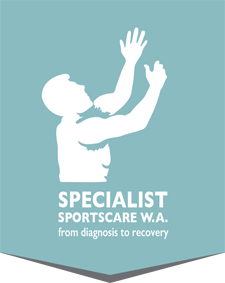
Your Guide to Using the Right Sports Shoes
20 Feb 2017 8:30 AM – Specialist Sportscare WA
Choosing the right shoes for your sport or activity is more important than you might think. You could be forgiven for thinking that the presence of a different shoe for every sport is just good advertising. Actually, the specific demands of different sports on your feet need to be met with specially designed footwear. Our feet house approximately a quarter of the bones in our entire body. Those bones, along with the joints, ligaments and tendons make the region extremely susceptible to injury. Taking care of your feet can also enhance performance, the ultimate goal of every sportsperson.
Here is our guide to buying the right sports shoes.
Understanding Your Foot
Your footprint is almost as unique as your fingerprint but there are still broad categories that shoemakers design for. Before you purchase your new shoes, perform a ‘wet test’ at home. All you have to do is wet the bottom of your foot and step on a thick piece of paper to leave a print. From the print, you should be able to determine the type of arch you have. If you have a curved footprint, you have a low/pronated arch. The opposite of this is called a high/supinated arch. A wide, straight footprint is a flat-arch.
Don’t just rely on a ‘wet test’ if you are playing sports or have specialised needs. Always talk to a professional to learn more about the specific needs of your feet.
Running Shoes
When deciding which shoes are best for you, knowing what you intend to do in them is half the journey. Running shoes should feel immediately comfortable and not require any wearing in. If they don’t feel comfortable walking around in the store, they aren’t the right shoes for you.
Pronators
If you pronate (your foot rolls inwards on impact with the ground), you should try stability or motion-controlled shoes. Stability shoes are good for people who pronate only slightly, while motion-controlled shoes are designed to correct severe over-pronation.
Supinators
If you land on the outside of your foot when you walk, you put extra pressure on your legs. As such, neutral shoes with good amounts of cushioning for better shock absorption are best suited for you.
Specific Sports
The demands of your sport should be met with the right shoe. A sport with a lot of jumping, like basketball or netball, will require a great deal of ankle support. In other sports, your shoe may be specific to the position you play. For example, ankle support is more important for bowlers in cricket than batsmen. A forward in rugby needs sturdier boots with durable or metal studs, while a back needs lighter boots with shorter studs for agility.
Choosing the right shoe is one of the best ways to prevent injury. If you have suffered an injury, contact Western Australia’s sports care specialists, Specialist Sportscare W.A.

